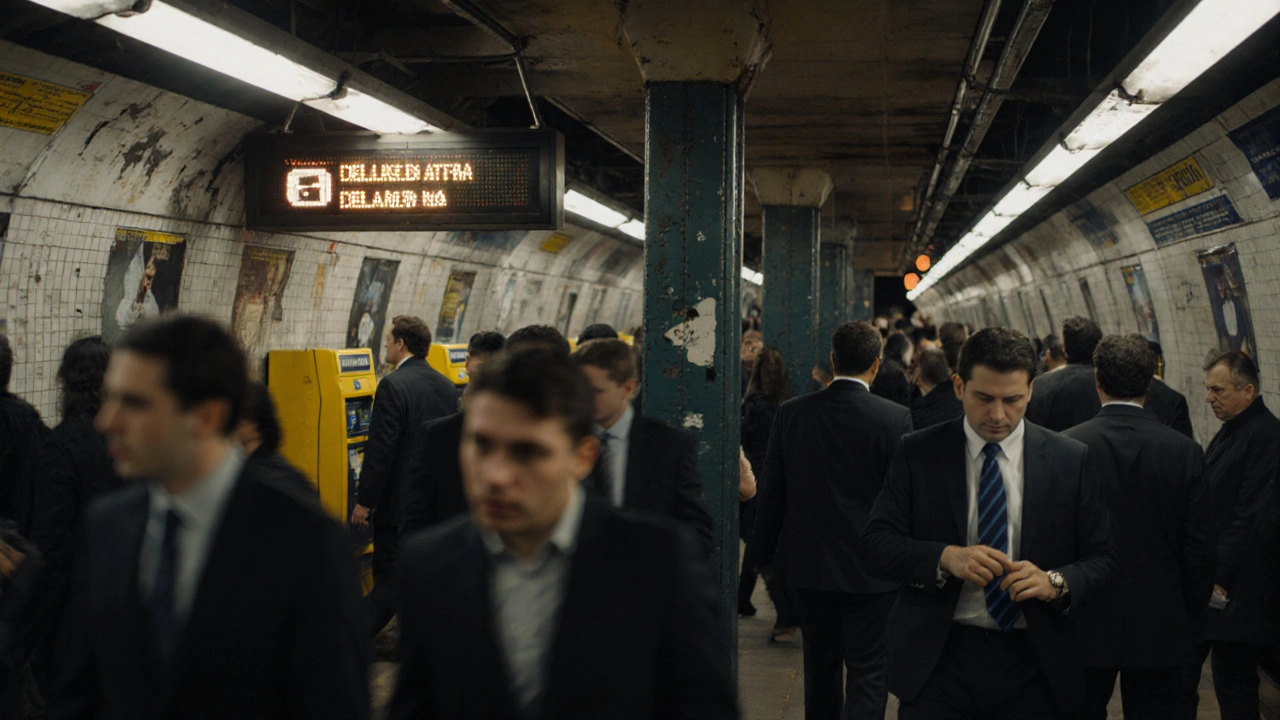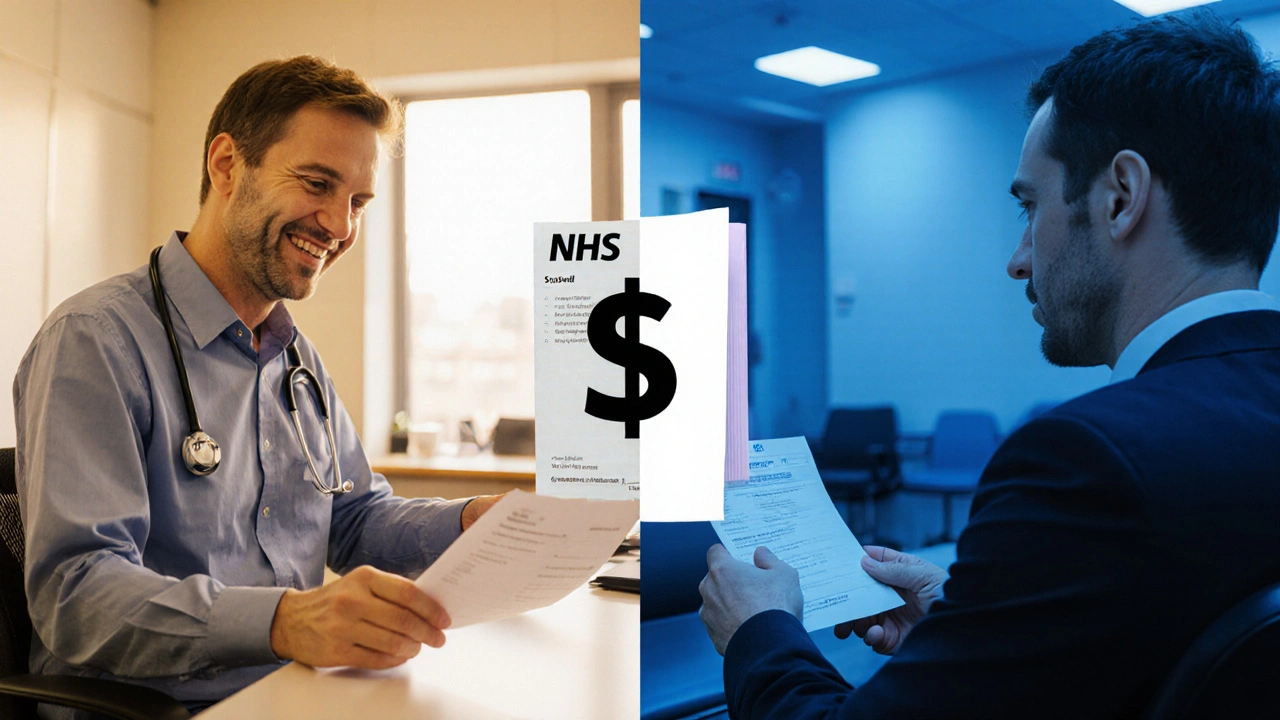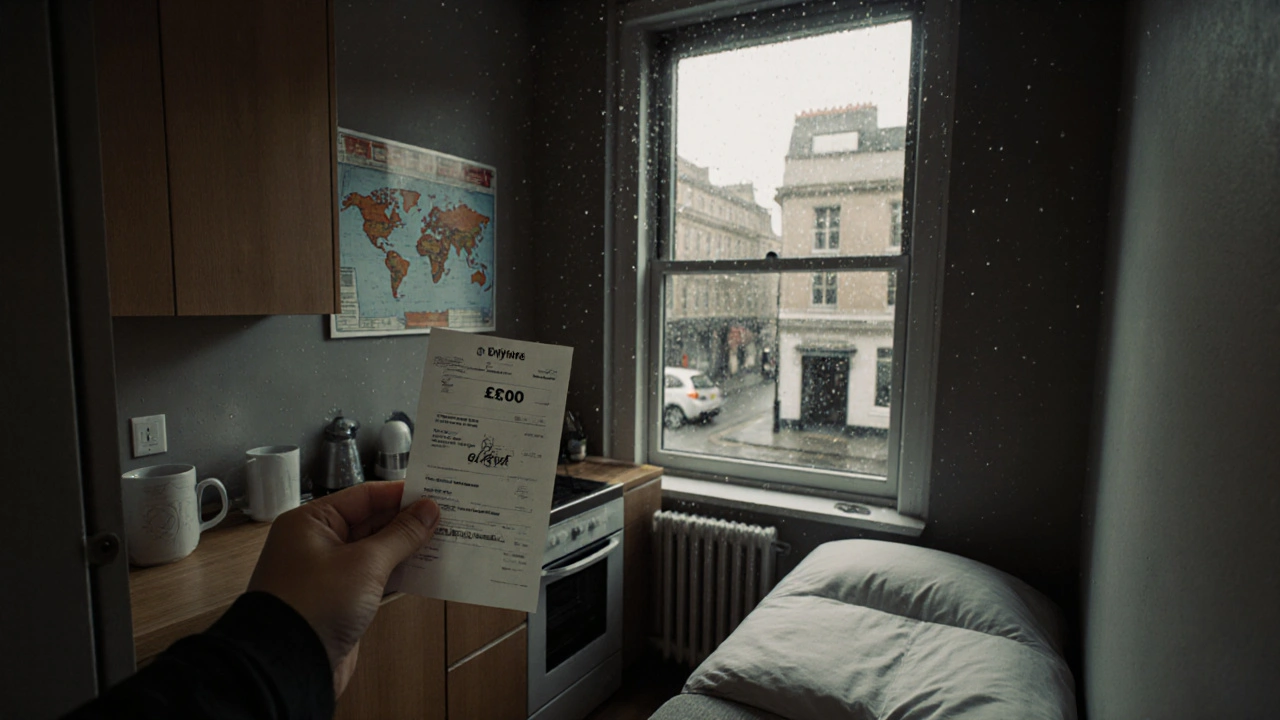Living in London or New York? Here’s what your wallet really says
If you’re thinking about moving to London or New York, you’ve probably heard both cities are expensive. But how expensive? And where does your money actually go? It’s not just about rent. It’s about how much you spend on getting to work, buying groceries, eating out, and still having something left over at the end of the month.
Let’s cut through the noise. This isn’t about which city is ‘better.’ It’s about which one fits your budget - and what you’re really paying for every single day.
Housing: Rent eats up half your paycheck in both cities
In London, a one-bedroom apartment in the city center costs around £2,200 per month. Outside the center? You’re still looking at £1,700. That’s roughly $2,800 and $2,150 USD, respectively. In New York, a one-bedroom in Manhattan averages $3,500. In Brooklyn? Around $2,900. Queens? You might find something for $2,200, but you’ll be commuting an hour or more each way.
Here’s the kicker: in both cities, rent takes up 45-55% of a median income. In London, the average salary is £42,000 a year. In New York, it’s about $70,000. But after rent, you’re left with less than $1,500 a month in either place - before taxes, utilities, or anything else.
London has smaller apartments for the same price. A 450-square-foot flat in Camden might feel like a studio. In New York, a 500-square-foot unit in Bushwick feels cramped too, but you might get a dishwasher. Neither city gives you much space for the money.
Transport: One monthly pass, two very different experiences
London’s Tube and bus system is dense, reliable, and covers nearly everywhere you’d need to go. A monthly Travelcard for Zones 1-2 costs £162. That’s about $205. You can hop on a bus, train, or even the Overground with the same card. Oyster and contactless cards cap your daily spend at £8.50 - so if you only take two trips, you pay less.
New York’s MetroCard is $132 for 30 days of unlimited subway and bus rides. That’s cheaper than London. But here’s the catch: the subway doesn’t go everywhere. If you live in Staten Island or parts of the Bronx, you’re paying extra for buses or even rideshares. And delays? They’re not rare. In 2024, the MTA reported an average of 22 minutes of delay per weekday during peak hours.
London’s system runs 24/7 on weekends. New York’s subway shuts down between 1 a.m. and 5 a.m. every night. That means late-night drinks in Brooklyn? You’re paying $30 for a ride home. In London, you can take the Night Tube home for £3.50.

Food: Grocery bills are similar. Eating out? Not even close.
At the supermarket, the difference isn’t as big as you’d think. A dozen eggs: £2.70 in London, $3.50 in New York. A liter of milk: £1.05 vs. $1.20. A loaf of white bread: £1.10 vs. $1.40. You’ll pay a little more in New York, but not by much.
But go out to eat - and the gap explodes.
A basic lunch in London - a sandwich, salad, and coffee - runs £12-£15. In New York? $18-$25. A three-course dinner for two with wine in a mid-range restaurant? £80-£100 in London. In New York? $140-$180. And that’s before tip. In London, service is usually included. In New York, you’re expected to add 18-20%.
Even fast food isn’t cheap. A Big Mac: £4.59 in London, $5.79 in New York. A Starbucks grande latte: £4.20 vs. $5.75. The difference isn’t just in price - it’s in what you get. In London, you often get more food for the money. In New York, portions are bigger, but the cost per bite is higher.
Utilities and internet: Who pays more?
Electricity, water, heating, and garbage for a 90-square-meter apartment? In London, it’s about £180 a month. In New York, it’s $150. That’s a small win for New York - but only if you’re in a newer building. Older apartments in Brooklyn or Queens often have poor insulation, and winter heating bills can spike.
Internet is cheaper in New York. A 100 Mbps plan costs $55 a month. In London, you’re paying £50-£60 ($63-$76) for the same speed. Streaming services? Same price. Netflix, Spotify, Apple Music - all cost the same in both cities.
Healthcare and taxes: The hidden costs that change everything
This is where people get surprised. In London, healthcare is free at the point of use through the NHS. You pay nothing for doctor visits, prescriptions (unless you’re over 60 or on low income), or emergency care. In New York, even with employer insurance, you’re paying monthly premiums, co-pays, and deductibles. A single person with a typical plan pays $300-$500 a month just for coverage. Add a prescription or a specialist visit? You’re out $50-$200.
Taxes are higher in London. The UK’s income tax starts at 20% on earnings over £12,570. The top rate is 45% for income over £125,140. New York adds state and city taxes on top of federal. A $70,000 earner in NYC pays about 28% total. In London, the same income nets you about 25% after tax. But here’s the twist: London’s tax includes healthcare. New York’s doesn’t.

Who wins? It depends on what you value
If you want more space, better public transit, and free healthcare - London wins. You’ll pay more for rent, but you’ll save hundreds on medical bills and get more reliable transit at night.
If you want higher salaries, bigger portions, and lower internet bills - New York wins. But you’ll pay for it in healthcare, tips, and unpredictable subway delays.
Neither city is cheap. But if you’re moving for a job, ask yourself: Is the salary bump big enough to cover the hidden costs? And if you’re planning to stay long-term, which system will support you when life gets messy?
Real-life example: Two people, two cities
Sarah, 29, moved from Manchester to London for a marketing job. She earns £48,000 a year. Her rent: £1,800. Transport: £162. Groceries: £300. Eating out: £200. Utilities: £180. Total monthly outgoings: £2,642. She has £958 left. She sees a doctor when she’s sick - no charge. She takes the Tube home at 2 a.m. after a party - £3.50.
James, 31, moved from Ohio to Brooklyn for a tech job. He earns $85,000. Rent: $2,800. Transport: $132. Groceries: $350. Eating out: $400. Utilities: $150. Health insurance: $450. Tips: $120. Total monthly outgoings: $4,402. He has $2,611 left. He pays $25 for a doctor’s visit. He takes a $40 Uber home after midnight because the subway’s shut.
Sarah has less take-home pay. But James has more expenses he can’t control.
Final thought: It’s not about which city is cheaper - it’s about which system works for you
London’s costs are more predictable. New York’s are more variable. One gives you healthcare. The other gives you higher pay. One has all-night transit. The other has bigger burgers.
Choose based on what you can’t live without. If you need to see a doctor without worrying about the bill, London wins. If you need to earn more to save for a house, New York might be the better bet - if you can handle the stress.
There’s no perfect city. But there is a smarter choice - if you know what you’re really paying for.
Is London really more expensive than New York?
It depends on what you’re comparing. Rent is cheaper in London, but salaries are lower. Healthcare is free in London, but taxes are higher. Eating out and nightlife cost more in New York. Overall, New York tends to be more expensive for day-to-day spending, but London’s hidden costs - like lower pay and smaller living spaces - make it feel just as tight.
Which city has better public transportation?
London’s system is more comprehensive and runs 24/7 on weekends. The Tube and bus network covers nearly every neighborhood. New York’s subway is faster and cheaper, but it’s older, less reliable, and shuts down overnight. If you rely on transit daily, London gives you more flexibility.
Can you live on $50,000 a year in New York?
It’s possible, but only if you live far from Manhattan - think Queens or the Bronx - and share housing. You’d need to cook most meals, avoid eating out, and skip luxuries like gym memberships or weekend trips. Healthcare costs will eat into your budget too. $50,000 is below the median in NYC, so you’ll be stretched thin.
Is £40,000 enough to live in London?
Yes, but barely. At £40,000, you’ll pay about £1,600-£1,800 in rent for a one-bedroom outside Zone 1. After taxes, transport, groceries, and utilities, you’ll have around £800-£1,000 left. You can survive, but you won’t save much. You’ll need to limit eating out, avoid car ownership, and skip expensive hobbies.
Do people in New York pay more for food than in London?
Grocery prices are similar, but eating out is significantly more expensive in New York. A restaurant meal can cost 40-60% more than in London. Tips add another 18-20%, and portion sizes don’t always justify the price. In London, service is included, so you pay exactly what’s on the menu.
Which city is better for freelancers?
London is better for freelancers who want stability. The NHS means no health insurance worries. Co-working spaces are cheaper and more widespread. New York offers higher pay for freelance gigs, but you’ll need to buy your own insurance, pay for coworking memberships, and deal with unpredictable income taxes. If you’re not earning six figures, London’s safety net gives you breathing room.
